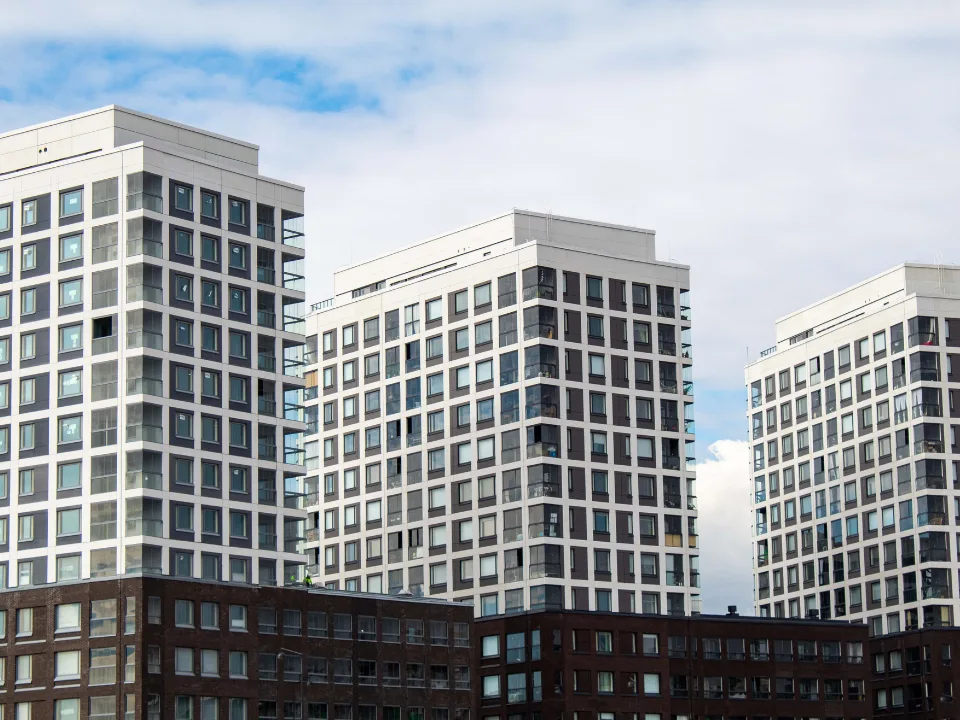The commercial office market has been in constant flux since 2020. In the past five years, high vacancy rates and the shift to hybrid workforce models has kept the commercial office space market in a continual decline. However, now we are seeing a long overdue shift –one that signals a persistent and evolving comeback for commercial office spaces.
With the massive push to “Return to Work” and the under market value rents still available, the CRE office market is on the rise. All signs point to a major uptick in commercial real estate, encouraging new investment in the sector.

Signs Pointing to Recovery
Even though the CRE Office market is primed for investment, the most common question business owners ask before jumping in is, “Has the CRE Office Market Hit the Bottom?”
Our answer is a confident “likely yes, but if it hasn’t, it’s very close”
While we may not have hit the absolute lowest point just yet, we’re certainly standing on the edge. Recent data shows a modest increase in office rental rates last quarter. While this might not sound like much, it’s a significant indicator that landlords are preparing for a turnaround in the market. After years of falling rents and softening demand, this gradual uptick signals renewed confidence in the sector.
This optimism isn’t just about the numbers. We’re seeing businesses expand their footprints and commit to more square footage. More importantly, many of the companies that downsized or abandoned their offices are now returning. We’re witnessing a real-time shift in the mindset of business owners–from asking, “How little space can we get by with?” to “How much space do we need to support growth and collaboration?”
The Push Back to the Office: Policy and Culture
One of the biggest drivers of this turnaround is the US government’s changing stance on remote work. The federal government’s “back-to-work” mandate for all government employees has set a tone that has been echoed across the private sector. Major corporations like Amazon, JPMorgan Chase, AT&T, and even Zoom (the former poster child for remote work) are now requiring employees to spend more days in the office.
This doesn’t mean the five-day office week is back for good. Instead, a hybrid model has become the new normal, with employees typically spending 3 to 4 days in the office. This gradual shift is empowering business leaders and CEOs who recognize the value of in-person collaboration and communication for boosting productivity, fostering innovation, and strengthening company culture.
A “Flight to Quality” Is Boosting High-End Buildings
With the increased demand in the office CRE market, we’re seeing a strong trend of businesses making a “flight to quality.” This means companies are actively leasing Class-A office buildings to take advantage of their modern amenities, excellent infrastructure, and prime locations.
Class-A properties offer everything today’s tenants want: flexible layouts, high-speed connectivity, wellness features, and easy access to public transportation. As rental rates have dropped over the past five years, tenants who used to occupy Class-B or low-tier spaces now find Class-A properties within reach. The result is a migration of tenants “up the quality ladder,” which is boosting occupancy and stabilizing rents in the best buildings on the market.

What This Means for Tenants and Investors
The current office CRE market presents unique opportunities for both tenants and investors.
For Tenants
Now is a prime opportunity for tenants to secure great deals. With the commercial real estate market still recovering, many landlords are motivated to fill their vacancies. This means you have more leverage to negotiate for things like lower rental rates, extended rent-free periods, and a greater build-out allowance to customize your space. Don’t be afraid to push for favorable terms, as landlords are more flexible than they were before the pandemic and eager to lock in reliable tenants.
For Investors
Landlords and property owners should concentrate on features that attract and retain tenants in a competitive market. Tenants today are looking for more than just four walls; they want spaces that offer value, convenience, and flexibility. Prioritizing properties with top-tier amenities–like modern gyms, collaborative workspaces, and communal lounges–can set a building apart. Furthermore, investing in flexible spaces that can be easily reconfigured to meet a tenant’s evolving needs, whether for a small startup or a growing corporation, is crucial.
Finally, a location with easy access to public transit remains a key factor, as it broadens the potential tenant pool by making the commute easier for employees. By focusing on these areas, landlords can increase their property’s appeal and ensure strong returns as the market stabilizes.
Conclusion
As the market rebounds, having the right commercial real estate advisor is more necessary than ever. At Tenant Advisory Group, we bring unmatched experience, market knowledge, and negotiation skills to every transaction. Connect with our team and let’s build your business together.
Also read: The Comeback of the Office Commercial Real Estate Market in 2025
TAGS